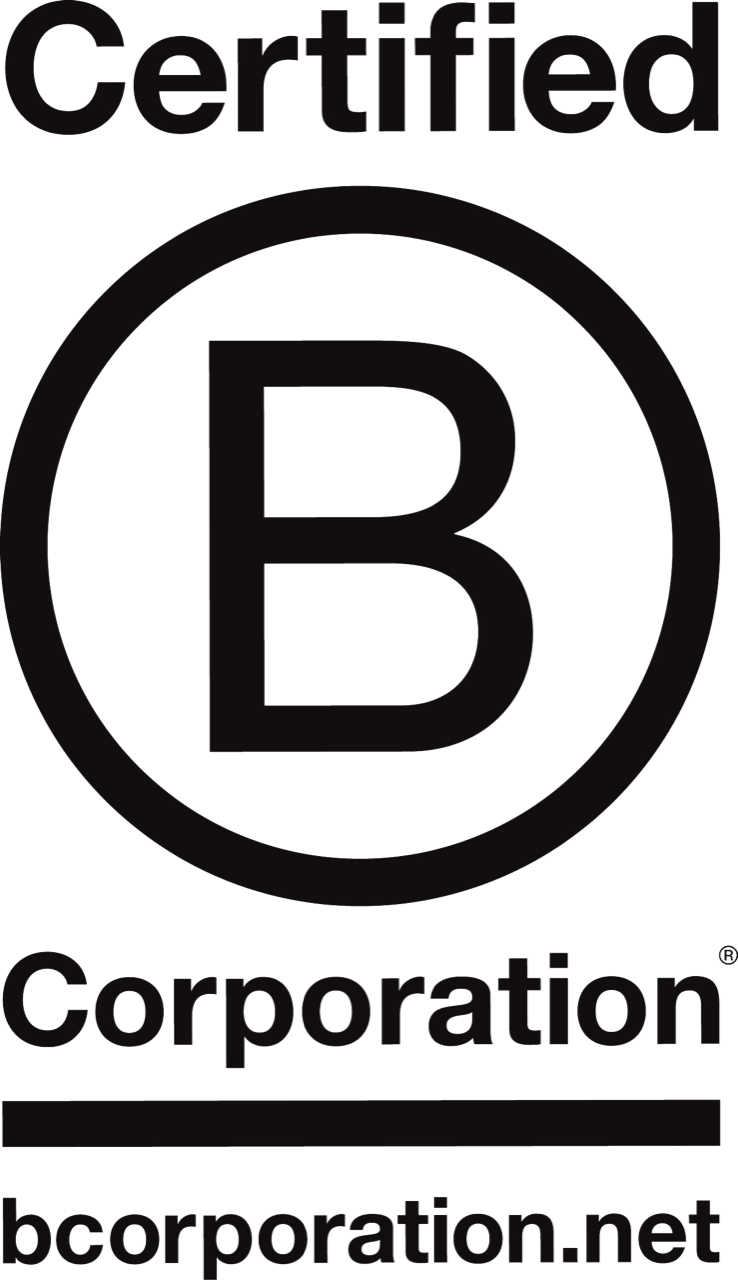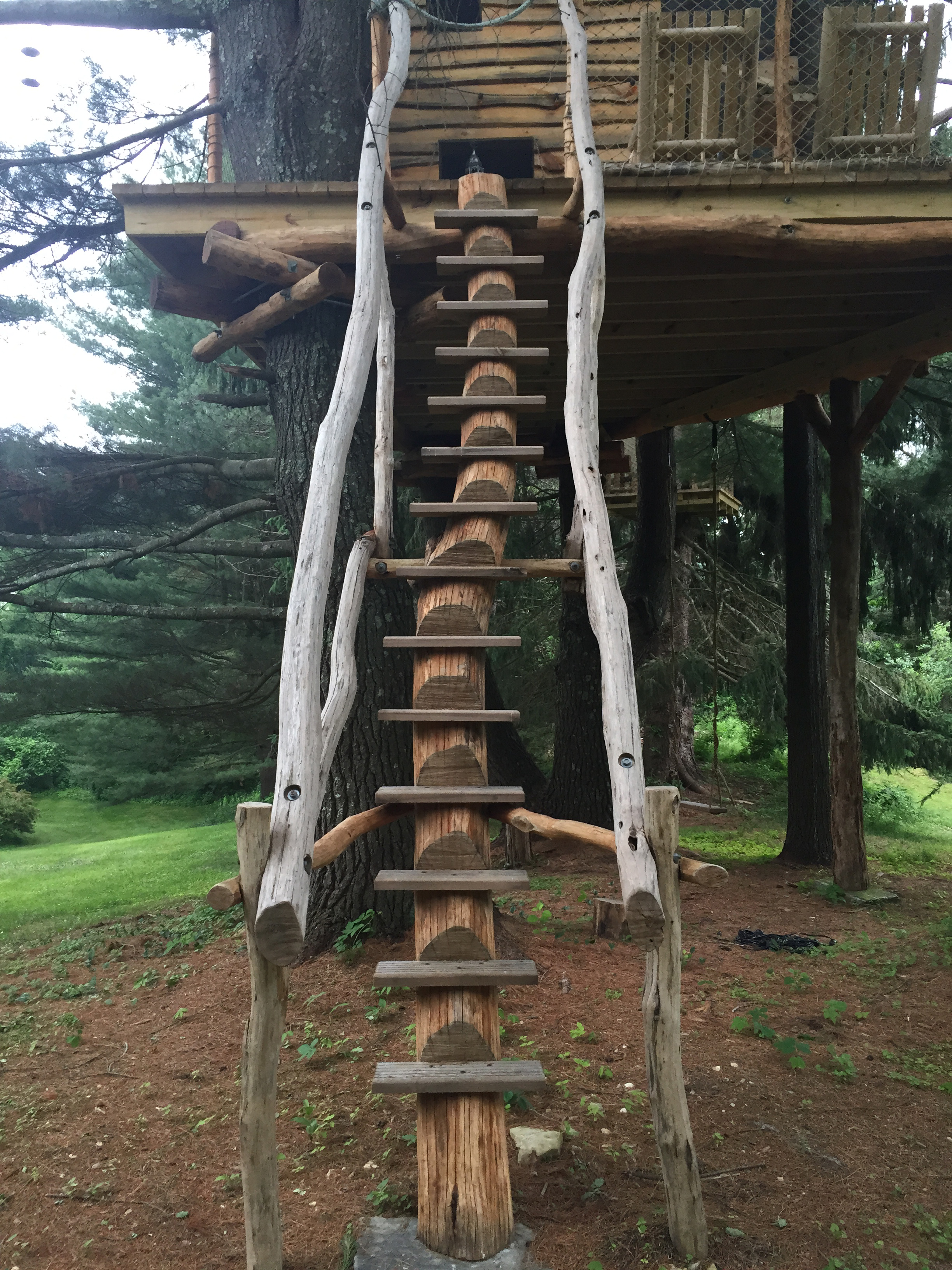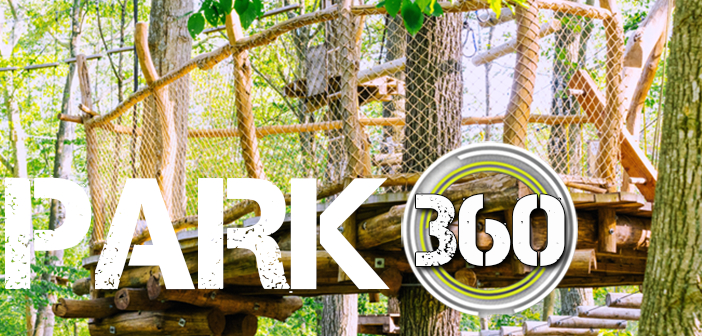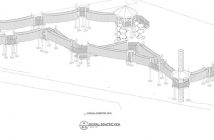Gerhard Komenda wanted to do well by doing good when he launched his Tree-Mendous Aerial Adventures company in 2011, developing dizzying networks of wooden platforms laced together in green canopies with creative webs of swings and bridges and zip lines. B Corp, a platform for socially conscious, environmentally aware businesses to elevate a financial model that focuses on more than dollars, lends credibility to the companies that become certified.
“It just came very natural for me, coming from Austria, a social democracy,” he says. “We looked at business not just in a money sense but as, ‘Hey, we are all in this together, and there’s more to life than just cash. We want to make a difference.’”
Zip line tours were pretty much cordoned to Central America when Komenda, an arborist, launched Tree-Mendous in Chatham, N.Y. He had a degree in forestry and his first business, Green Forestry, was among the first wave of B Corp-certified businesses. He quickly pursued the rigorous B Corp certification for Tree-Mendous.
Following the B Corp ethos requires Komenda to keep three balance sheets. Obviously, like any business, there’s the one that counts the money. What’s different for B Corp companies are the balance sheets that measure a) social impacts of operations, including how you treat your your employees, suppliers and customers, and b) a business’ environmental impacts and footprint.

Tree-Mendous became a Certified B Corp following a rigorous audit process.
B Corp auditors stop in every year to scour those spreadsheets and deliver an assessment.
“It’s a real audit. It’s not like, ‘Oh just tell us you are good and we’re fine.’ They really grill you,” Komenda says. “The score basically not only gives you certification but gives you an idea of how well you are doing, so you can self-assess as well.”
The B Corp audits dig deep into his operation. Tree-Mendous gains points for using locally sourced materials—hence Komenda’s disdain for Asian-made cables. The audits get granular, too, including whether his office composts and uses sustainably-made toilet paper. (He uses a B Corp-certified supplier for most of his office products, and that has trickled down to what he and his co-workers use in their homes.)
Unexpected Benefits
As each year passes with another audit, Tree-Mendous has found more ways to develop sustainable operations. After seven years, the company’s approach has evolved beyond whittling down its carbon footprint or lessening its impact on the environment, or developing a better company culture. It’s created a company-wide outlook that has streamlined processes and unveiled unexpected efficiencies.
“Once you get used to constantly checking your procedures, you naturally start looking at the whole,” Komenda says. “Your outlooks kind of veer away from the initial intent of measuring impacts on the environment, and you start finding financial gains in taking small steps, like

Tree-Mendous utilizes local materials, like these Black Locust stairs built for an installation on the west coast.
actually prefabbing something in the shop so we don’t have to shop it around and have it shipped across the country.”
He said his B Corp status is winning customers, from park builders to users. They seem willing to pay a bit more knowing that their parks and adventures have a limited impact on the environment while keeping workers gainfully employed.
“Pretty much anyone who walks into a park can tell if we built it. We have that brand awareness. They are saying, we want a Tree-Mendous park,” he says. “We are getting customers who chose us because of B Corp—especially some of our bigger customers, organizations like the Bronx Zoo. For them it was very important that we were not just some sort of whack-and-slash company, because we are building in trees that belong to New York City. They were scared something might happen to their trees, and they were very careful in selecting their vendor. Now people are calling us up, asking us to build their park. We are getting quite a bit of work where people don’t even shop around. They don’t even look at other builders.”
Building Ramblewild
Case in point: Valentina Cugnasca didn’t look beyond Komenda’s crew for her Ramblewild, an 11-acre treetop adventure park tucked into her nearly 1,500-acre Feronia Forest in the heart of Massachusetts’ Berkshires. (See “How to Fund a Forest” online at adventureparkinsider.com for more on Ramblewild.) Cugnasca initially bought the woods with investors as a timber and real estate play.
She spent time in the forest and changed her focus, returning to school to write a thesis titled “Tree Hugging Capitalism” and establishing her Feronia Forest as a B Corp business in 2012. Her new-school forest management company draws sap from maple trees for maple water and maple syrup. The forest hosts renewable energy facilities. The Tree-Mendous-built Ramblewild park was part of her effort to show investors and the world that it’s possible to be a tree hugger and a capitalist.
“Those things can coexist and we can prove that with Ramblewild, where we are infusing recreation with conservation into a really holistic, sustainable approach where we are profitable. That allows us to create more impact and do it over again to create even more impact on more people,” she says.
Komenda’s Tree-Mendous matched Cugnasca’s mission to develop a more meaningful social and economic value from wildlands, one anchored in experiences, not extraction. There would be no heavy machinery. Trees would not be damaged. The natural experience would be immersive, with the trees taking the starring role.
“I believe business is one of the most powerful means to influence change,” Cugnasca says.
And it doesn’t have to be a tree-hugging business.
“It can be environmentally agnostic. You choose your impacts whether you care about the environment or not,” she notes. “If a business changes their supply chain or they improve how they treat their workers, not because they care about the environment but because they are seeking financial rewards, the impact is still there right. The point is, we want this to be normal, not noble.”
Inspiration for Others
The notion behind B Corp companies is that they will push, pull, and inspire other businesses to follow suit and shoulder the yoke of sustainability. Those B Corp companies aren’t pursuing some altruistic mission as much as showing how social responsibility and environmental sensitivity is a more-than-viable business model. It’s worked for several industries, from clothing makers to tech giants to cosmetics companies.
But even as the aerial adventure park industry grows, Tree-Mendous remains the only B Corp outfit among the now hundreds of zip-lining, tree-touring adventure park builders across the country.
“It’s a lot of effort and you can’t fake it. You are really either behind it or it’s not happening. It takes a certain dedication. I’m sure a lot of my colleagues don’t see the value in that,” says Komenda.
One choice Komenda has made it to eschew pressure-treated lumber. “I’m pretty sure we are the only one who does that.” Instead of chemically treated wood, Komenda uses naturally rot-resistant lumber, such as eastern white cedar for projects out East, and western red cedar or black locust for jobs out West. That means he doesn’t need to treat his wood with chemicals or ship materials across the country.
Every B Corp company is intent on spreading the gospel of B Corp. The whole idea is to make the a world better place through better business practices. And that eventually reaches customers, especially younger ones, who are increasingly recognizing the power of their shopping dollar as a method of advocacy.
Komenda likes to quote the inspirational boss of one of the first full-throated supporters of B Corp:
“The B Corp movement is one of the most important of our lifetime, built on the simple fact that business impacts and serves more than just shareholders—it has an equal responsibility to the community and to the planet,” said Rose Marcario, the CEO of Patagonia.
Komenda has never regretted toeing the B Corp line, although every audit process does stress his team. It costs to be a part of the program. And it’s a bunch of extra work.
But the rewards are worth the toil, he says. B Corp allows for operations to follow an overarching strategy beyond dollars.
“The reason for this business is not about maximizing profits. I need to act in the best interest of my stakeholders, and that includes everyone who comes in contact with us. I can’t screw my suppliers because I want more profit. I can’t milk my customers. I can’t provide lousy pay to my co-workers,” Komenda says. “Chasing dollars is why we have this situation in our society today, with this division of haves and don’t haves.”





